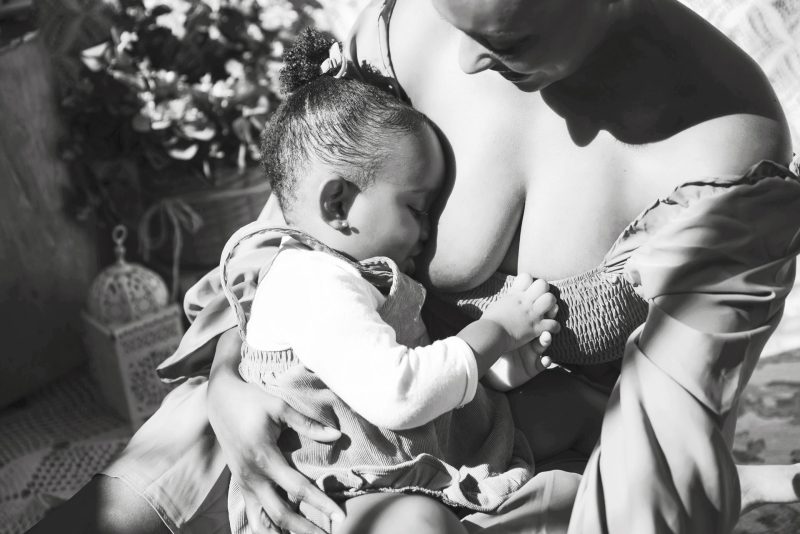Breastfeeding is the first and the most important part of your child’s life as it provides your infant with the initial nourishment for the first six months of life. However, breastfeeding your child is not as easy as it sounds.
Several popular misconceptions about breastfeeding make mothers reconsider breastfeeding their children. For example, breastfeeding can make your breasts saggy and painful. However, some of those popular misconceptions are different from reality.
Worry no more. This article aims to lessen your worry by uncovering the truth about those popular breastfeeding myths.
Myth 1: Breastfeeding is always painful
Many women, especially new moms, believe that breastfeeding feels painful. Although it needs time to adjust the process, breastfeeding should not be severely painful.
Contrary to what you may believe, this pain can be caused by several factors, such as irritation, low milk supply, and incorrect breastfeeding position. Thus, it is important to discover the initial problem that makes breastfeeding feel torturous besides generalizing the myth that breastfeeding is always painful.
Myth 2: Breast size determines milk production
Another thing that concerns breastfeeding moms is the amount of milk they can produce for their children. Mothers often ask themselves, “Is it enough for them?” or “Why can I only produce a small amount of milk even if I have big breasts?”
Well, it turns out that your breast size is not linear with the amount of milk production. The truth is that the breasts’ capability to produce milk can be predicted by the change in the breasts’ volume from before pregnancy and during lactation, not solely on the initial size of the breasts.
Myth 3: Breastfeeding causes sagging breasts
There is a big misconception about how breastfeeding makes your breasts saggy. However, the truth is that breastfeeding does not have a direct effect on the size and shape of the mother’s breasts.
Thus, if you feel like your breasts are sagging, it is probably because of other factors such as the body fat amount and the number of pregnancies you’ve already had.
Myth 4: Certain foods increase milk supply significantly
It is common to hear another woman suggest that you have to eat certain foods to increase your breast milk production. Surprisingly, no evidence exists that a particular food can significantly boost milk production.
Instead of only consuming certain ingredients mistakenly believed to be a booster for breast milk production, the US Department of Agriculture suggests mothers eat healthy and balanced meals consisting of fruits, vegetables, whole grains, and proteins.
In addition, it is advised to ask for your doctor’s recommendation on suitable prenatal vitamins and supplements.
Myth 5: Inverted nipples prevent breastfeeding
For generations, women blamed their inverted nipples for being unable to breastfeed their babies intensively. Nonetheless, flat or inverted nipples cannot be used as justification for not being able to breastfeed your baby.
Breastfeeding can be done no matter what your nipple looks like. Moreover, there is certain technologies are available such as The Nipple Shield aimed at helping moms with inverted nipples. Furthermore, there are also practices that can help you to breastfeed your baby if you have inverted nipples. For example, give more stimulus toward your areola by gently pinching it.
Myth 6: Breastfeeding multiples is not possible
Mothers with twins rarely breastfeed their babies because they believe they cannot provide the needed amount of breast milk. Nevertheless, breastfeeding your twins can give more stimulus toward your body so that you can produce more milk for your babies. Formula feeding can answer your worry if you have multiple babies.
However, it is important to acknowledge that certain situations call for the flexibility of formula feeding. For example, if your babies cry simultaneously, you will not be too stressed out since your husband can help you feed one of your babies through formula or bottle feeding.
Myth 7: Breastfeeding prevents pregnancy entirely
In some cases, it might be true that within the breastfeeding period, you won’t be able to get pregnant again. What mothers need to know is that the menstrual cycle is a thing that needs to be well-understood.
As ovulation can happen anytime without your notice, it is possible that your egg can be fertilized, even when you intensively breastfeed your children.
In conclusion
These well-known myths about breastfeeding have been inherited for generations. Therefore, it is highly advised to make yourself aware that not all those statements are true. Many new information and inventions are available to mothers who experience problems in breastfeeding.
Finally, busting these myths can make your breastfeeding journey less stressful and intimidating, allowing it to become one of your most memorable motherhood experiences.
If you would like to see more resources on breastfeeding, check out the Parenting Science Labs. The lab uses the research of the Institute for Life Management Science to produce courses, certifications, podcasts, videos, and other tools. Visit the Parenting Science Labs today.
Photo by Criativa Pix Fotografia on Pexels



